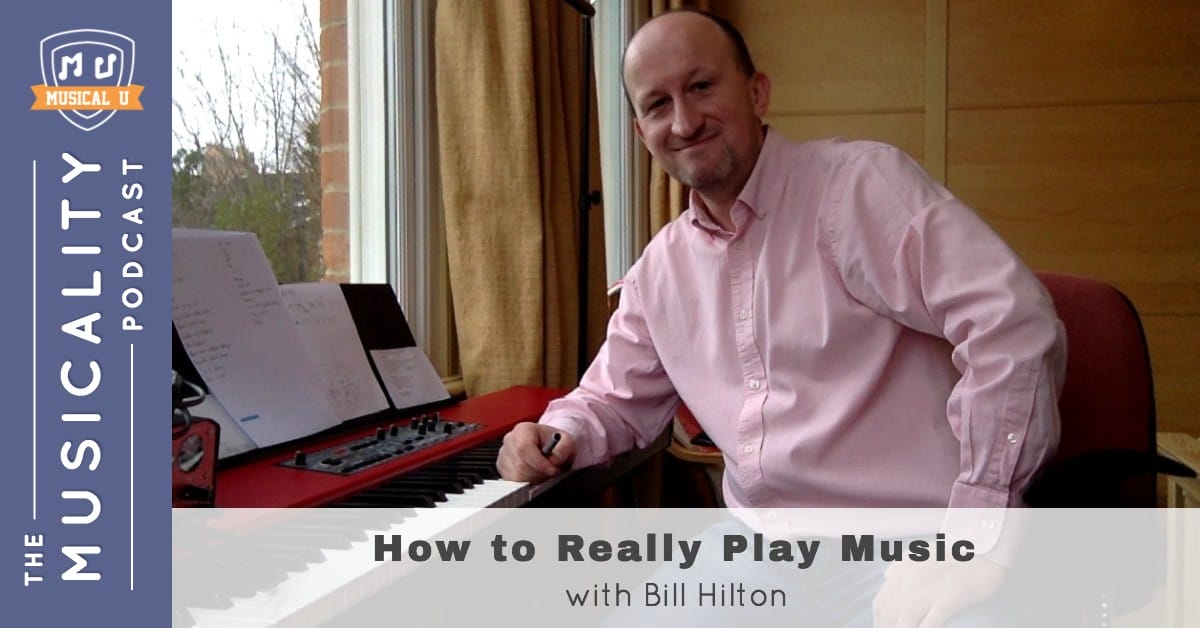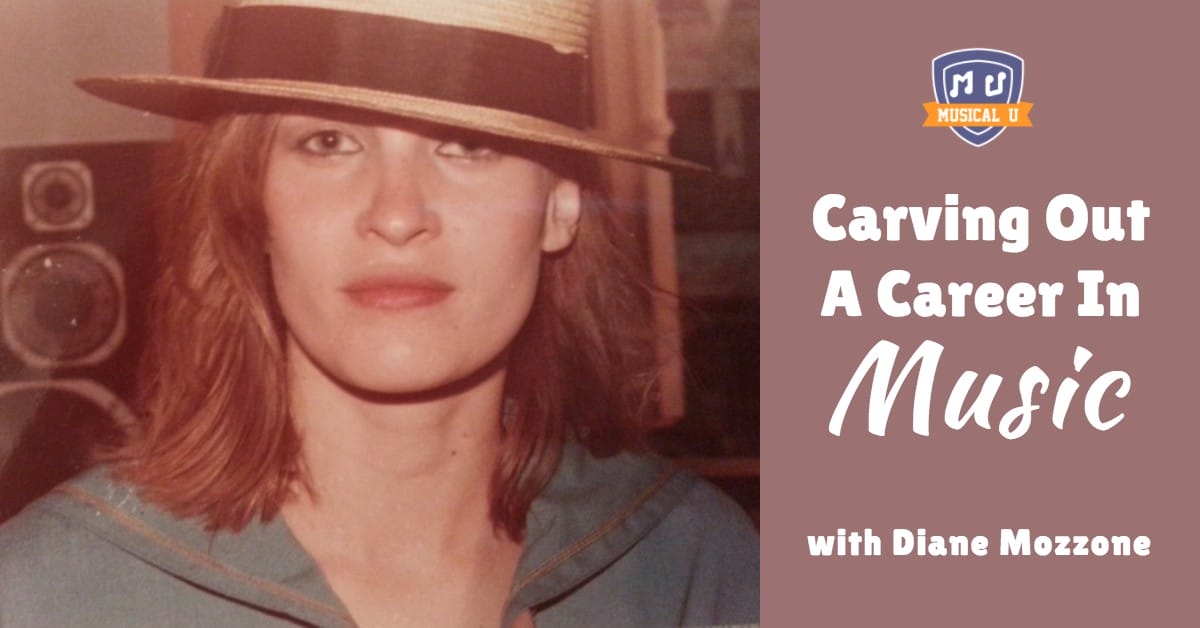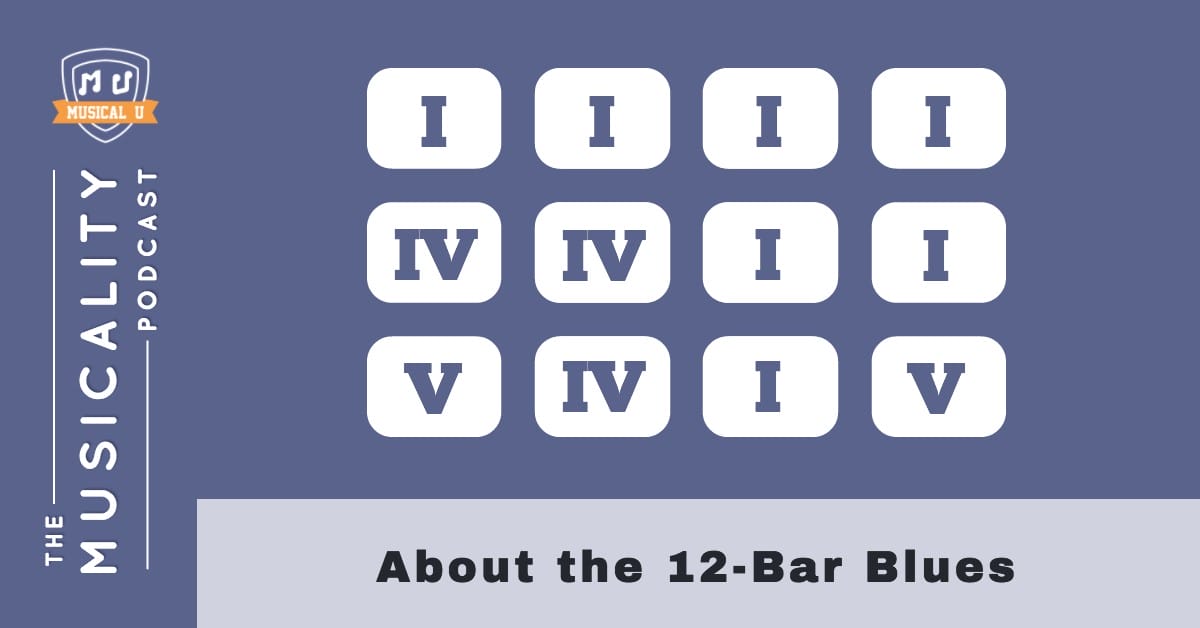https://www.musical-u.com/learn/patterns-playgrounds-4-ways-approach-improvisation/
Learning to improvise is hard! No matter where you are in your musical journey, you can also learn this fun part of musicality. Learn all about using patterns and playgrounds to help take your improvisation to the next level. https://www.musical-u.com/learn/patterns-playgrounds-4-ways-approach-improvisation/
Is ear training a magical skill? There are 3 stages to ea…
https://www.musical-u.com/learn/how-does-ear-training-work/
Is ear training a magical skill? There are 3 stages to ear training, and we will walk you through what it means to train your ears in this article 🎶 https://www.musical-u.com/learn/how-does-ear-training-work/
That awkward moment… when someone in the crowd can’t seem…
https://www.musical-u.com/learn/musicality-means-clapping-in-time/
That awkward moment… when someone in the crowd can’t seem to clap in time with the music. Why is clapping time a fundamental skill in musicality? And how can you develop this skill? https://www.musical-u.com/learn/musicality-means-clapping-in-time/
It’s easy to get stuck in a rut with your musical trainin…
https://www.musical-u.com/learn/learning-by-repetition-how-musicians-can-improve-with-looping/
It’s easy to get stuck in a rut with your musical training. If you need something to jump start your musical training, you may want to try incorporating looping into your practice. https://www.musical-u.com/learn/learning-by-repetition-how-musicians-can-improve-with-looping/
What is the theme to your next musical masterpiece? Music…
https://www.musical-u.com/learn/how-to-develop-your-new-songs-theme/
What is the theme to your next musical masterpiece? Musical U takes you through an exploration into musical themes. And you you can develop a theme that your listener will love! ♬ https://www.musical-u.com/learn/how-to-develop-your-new-songs-theme/
The Art of Learning Music, A Musical Life, and Getting the Blues
There are as many ways to approach music as there are musicians.
Do you want to become a piano virtuoso? Get signed to a record label? Write some unforgettable songs?
No matter what your goal, this week, Musical U has something for you.
Learn about one teacher’s own learning journey in music, and his fresh take on learning an instrument as an adult. Read the fascinating story of a woman who went from an underage club-hopper at New York’s legendary CGBG to fronting her own bands and enjoying a successful solo career. And, give your songwriting a kick by learning the 12-bar blues in all their beauty and versatility.
The Art of Learning Music
Attitude is a little thing that makes a big difference: it may sound cliché, but in the case of learning music, it is very true and definitely worth remembering.
This week, the Musicality Podcast interviews a man with a very refreshing attitude towards learning and teaching music. Bill Hilton may have started in classical piano, but his scope has expanded to cover everything from pop and rock to cocktail piano. His open attitude to genres and to styles of learning music are evident in his book, How To Really Play The Piano, and his YouTube channel of helpful music tutorials.
 Read a truly eye-opening interview that reveals one piano teacher’s own learning journey, the hidden advantage adults have in learning music, and the secret to playing creatively and expressively over at How To Really Play Music, with Bill Hilton.
Read a truly eye-opening interview that reveals one piano teacher’s own learning journey, the hidden advantage adults have in learning music, and the secret to playing creatively and expressively over at How To Really Play Music, with Bill Hilton.
Bill is fascinated with cocktail piano and has learned to change any piece of music into this gorgeous, loungy style. Ready to learn the secrets of musical transformation? Bill has created a tutorial to set you on your way – no alcohol required!
One of the difficulties that musicians face during their journey is frustration at their progress. This can be especially true for adult learners. If you need some motivation to get your musical passion back, My Music Masterclass has some fantastic advice to get you back in the practice room.
Even the most inspired musician can have difficulty fitting in their practice goals. Life seems to get in the way and redirect us towards other things. 10 Minute Jazz Lesson shows how to schedule your practice throughout the week.
Bill expressed his frustration with music education and how some teachers approach the musical journey. If you are like many of our readers, you’ve already likely experienced both good and bad teachers. With so many resources online, it is easier to find a teacher who is the right fit for your musical needs. Merriam Music shares some helpful tips for assessing an online music teacher.
At the end of the day, remember that making music is supposed to be fun! To branch out your musical expression, you may want to try picking up the… Melodica?

Sit back and enjoy this exploration into this unique instrument from Melodica Men.
A Musical Life
CBGB – the birthplace of New York’s rock, folk and punk music. Imagine hanging out there as a teenager, then as a punk singer, landing an international modelling contract, getting a degree in dance, starting a band, having a successful solo career, and becoming a prolific songwriter in multiple genres – all in one lifetime.
Diane Mozzone has done all this and much, much more. In a detailed interview with Musical U, she details her incredible career, her songwriting process, and her newfound love for metal music. She also shares her revelations on succeeding in a cutthroat industry, and the key to effective self-promotion as an artist.
 This is one interview you won’t want to miss. Head over to Carving Out a Career in Music, with Diane Mozzone for a fascinating story of music scenes, band dynamics, and a solo career spanning everything from punk to house music.
This is one interview you won’t want to miss. Head over to Carving Out a Career in Music, with Diane Mozzone for a fascinating story of music scenes, band dynamics, and a solo career spanning everything from punk to house music.
During her career, Diane experienced a situation that many vocalists will face: the effects of too much strain on her vocal chords. While she was able to get the help she needed, there are regular news stories of famous singers that never fully recover. If you sing, you need to take care of your vocal apparatus – let Vocal Splendor teach you how!
Success as a singer can be a difficult path for any musician. Taking your music out of the practice room and onto the stage can be intimidating for even the most confident musician. If you need some practical tips to take the next step, the Gig Gab Podcast discusses gaining confidence in front of the microphone.
Throughout her career, Diane expressed herself in many different genres of music. However, she also discussed the importance of focusing in on one genre when composing a collection of songs. Youbloom explores specializing in a genre of music as a songwriter… and what to do after you have your songs ready to go.
Diane left us with the advice of defining what success means to you. It certainly is not the same for every musician, nor should it be. Ari’s Take discusses how to define your own success in your musical journey.
Getting the Blues
Not only are the blues a rich, fascinating genre in their own right, but their enormous influence is heard in today’s pop, rock, country, folk, and more.
So, what do many of the earliest blues songs have in common with the bluesy rock tunes we have today?
 That would be the 12-bar blues, a simple three-chord progression that turns out to be a very effective musical storyteller.
That would be the 12-bar blues, a simple three-chord progression that turns out to be a very effective musical storyteller.
To learn how to play the 12-bar blues and explore what makes this simple progression so powerful, head over to About the 12-Bar Blues for your introduction!
One practical outcome from learning the 12-bar blues: it’s a great tool for helping you to develop confidence in a new style of music. Many even use this chord progression to help with their improvisation skills. If you want to develop confidence as a musician, Donna Schwartz will show you how!
It’s no secret that the Musical U team is particularly enamored with the ukulele. For such a compact instrument, there’s so much that it can do! While we typically think of the piano, bass, or guitar for playing the 12-bar blues, perhaps it is time to consider the seemingly endless possibilities of the uke! Explore the 12-bar blues on your uke with Ukulele Underground!
After you are comfortable with the structure of the 12-bar blues, it’s time to spice it up with some variations. One way to do that is by using approach chords to add interest and variety! Swift Lessons talks about approach chords and shows how they can add new life to your chord progressions.
We’ll wrap up this exploration into 12-bar blues by incorporating a staple of blues music. The harmonica can be a fun tool to expand your musical exploration! Even famous players like Neil Young and Billy Joel made steady use of the instrument during their storied careers. Bring the harmonica to your 12-bar practice with this lesson from Tomlin Harmonica Lessons!
Learning and Creating
Whether Bill’s interview made you want to try out cocktail piano or Diane’s story has inspired you to pursue songwriting, we hope the unique musical journeys and achievements of these two individuals will serve to motivate you.
Diane Mozzone is currently learning interval ear training with Musical U to help take her musicality to the next level. What musical skills do you dream of acquiring? Sign up with us and make them a reality!
The post The Art of Learning Music, A Musical Life, and Getting the Blues appeared first on Musical U.
“What is the best method for practicing ear training?” We…
https://www.musical-u.com/learn/the-best-ear-training-method/
“What is the best method for practicing ear training?” We hear this question a lot within Musical U and explore the many ways to train your ears in this article. Find your path today! https://www.musical-u.com/learn/the-best-ear-training-method/
Audition season is right around the corner! 😖 Not to worr…
https://www.musical-u.com/learn/how-to-prepare-for-the-big-audition-part-1/
Audition season is right around the corner! 😖 Not to worry, here at Musical U we have explored how you need to prepare for the big day. Learn more in part 1 of this journey to audition day! https://www.musical-u.com/learn/how-to-prepare-for-the-big-audition-part-1/
About the 12-Bar Blues
Without the 12-bar blues, we wouldn’t have rock ‘n’ roll… or, come to think of it, much of the Western music we have today! In this episode of the Musicality Podcast, we’ll look at the simple chord progression that comprises the 12-bar blues, how to play it in any key, and how the 12-bar blues can be used as a powerful songwriting tool (and not just by blues musicians!).
Listen to the episode:
Links and Resources
- Interview with Bill Hilton
- About the I, IV, V, and vi Chords
- Finding Chords in Scales
- Playlist of songs that use the 12-bar blues
- Introduction to Blues
Enjoying The Musicality Podcast? Please support the show by rating and reviewing it!
Transcript
Today we’re going to be talking about the “12-bar blues”. This was mentioned in our recent interview with Bill Hilton, author of How to Really Play the Piano – but what we’ll discuss today matters whether or not you play piano – or blues!
You may have heard of the “12 bar blues” before and have a vague idea of what it is. In this episode I’m going to talk about what exactly it is, where you’ll hear it, and why it’s worth knowing about, even if you don’t like the blues.
What it is
The “12-bar blues” is a simply a particular chord progression which is 12 bars long.
It’s helpful to think of it as being arranged into 3 lines, each of 4 bars.
It uses just the I, IV and V chords – and if you don’t know what I mean by that please check out episode 33 about the “one, four, five and six” chords. It actually tends to use the V7 chord instead of the plain V, which just means that it adds a fourth note to the chord, which is note seven above the root. For simplicity I’m going to be saying just “five” as I continue, but keep in mind it’s normally actually a 7th chord, not a regular major chord like the I and the IV.
For example, if we’re in C Major, then our three chords for the 12-bar blues are going to be:
– C Major: C, E and G
– F Major: F, A and C
– G7: G, B, D and F
The 12-bar blues is just a progression which uses these chords in a particular order.
If we think in terms of those three lines of four bars I mentioned, then:
– Our first line is just four bars of the I chord.
– Our second line is two bars of the IV chord followed by two bars of the I chord.
– And our third line is the V chord, the IV chord, then two bars of the I chord
In fact that last chord is often changed to a V because it creates a nice turnaround for the repeat, so that last line becomes V, IV, I, V.
Let’s listen to an example of that. As you listen, think through: I I I I, IV IV I I, V IV I V
[ AUDIO EXAMPLE ]
That was a simple piano arrangement. Let’s listen to something with a bit more instrumentation.
[ AUDIO EXAMPLE ]
As you’ll remember from episode 27 on “finding chords in scales”, thinking in terms of numbers means you can easily think about and recognise this same progression in any key.
So our C Major example would be:
C, C, C, C
F, F, C, C
G7, F, C, G7
If we wanted a 12-bar in A Major that would instead become:
A, A, A, A
D, D, A, A
E7, D, A, E7
So that’s what the 12-bar blues is. And it probably sounded familiar to you when I played an example a moment ago, because it crops up all over the place.
So where will you hear it?
Well, from the name you’ve probably guessed, there’s a strong association with blues music. If you listen to old-school blues like Muddy Waters, Buddy Guy, John Lee Hooker, you’ll hear a lot of songs that simply follow this 12-bar progression. Songs like Sweet Home Chicago, Hoochie Coochie Man, and Messin’ with the Kid.
But as one of the many ways blues influenced early rock music, the 12-bar progression also made its way into rock. You hear it in rock-and-roll classics like Great Balls of Fire, Johnny B. Goode, Rock around the Clock, Blue Suede Shoes – and also tracks by blues-influenced rockers like Eric Clapton, Jimi Hendrix and Led Zeppelin.
I’ll put a link in the shownotes to a playlist with all these examples and more.
Once you get to know the 12-bar blues it’s easy to spot it in music and it becomes a great case study for tuning your ear in to recognising chords by ear in the music you hear each day.
Why it’s worth knowing about, even if you don’t like blues
So I touched there on one reason it’s worth getting familiar with the 12-bar blues, even if you’re not a blues fan and even if you never play blues music. And that’s because it’s a really elegant example of a I-IV-V progression, and one you can easily practice recognising in real music.
I love the 12-bar because it’s about as simple as you can get with a chord progression while still being interesting. It tells a little musical story:
- We start out with four bars of the I chord. This is the home chord and it feels relaxed and stable and there’s not much going on
- Then in the second line we move to the IV chord. That still sounds pretty comfortable but it’s a definite move and we can feel it return to the I after two bars. We’re back home – that could be the end of it – but instead…
- In line three we move to the V7 chord, the epitome of tension. This is the peak of the story, and it feels good to move to the IV chord which relaxes things a little, and then back home safe to the I chord. If we throw in the V7 as the last chord too we reintroduce that tension and it builds excitement to repeat the whole thing again
When you get familiar with this it gives you a way to start getting to know those three chords and their roles, and helps you spot them and those transitions from one to another, even if they occur outside of the 12-bar structure. For example you get to know what it sounds like to go from I to V7, creating that tension – and what it’s like to go from V7 to IV to I, gradually releasing the tension.
The 12-bar blues is also a great playground for learning to improvise. In episode 21 we talked about chord tones and how choosing your improvised notes based on the current chord can help you create tension and release, making your solos more musical. The 12-bar blues is a great progression for practicing that with, as you get a chance to see which notes from the major or pentatonic scale fit well with each chord in the progression. And that story we talked about, where the V or V7 is the peak of tension and interest – that gives you a natural structure to base your own solo’s musical story around.
The last thing I’d say about the 12-bar blues is that it’s also a good playground for exploring writing lyrics and melodies. A lot of 12-bar blues songs will use a fixed AAB pattern for the lyrics, meaning that if we think about that division of the 12 bar into 3 4-bar sections, there are three lines to the lyrics, and the first two are just the same. You’ll immediately know what I mean if I give you an example like:
I woke up this morning, and went and played my guitar
I woke up this morning, and went and played my guitar
But when I played it this morning, I could only play the 12-bar.
That lyric structure may seem over-used and formulaic, but as we’ve talked about on this show before and as we teach inside Musical U, when it comes to creative tasks like improvising and songwriting, having constraints can actually make it far *easier* to be creative and find new ideas.
So if you’re working on writing songs, challenging yourself to write a new and interesting 12-bar blues can be a great way to stretch yourself in a new direction.
So that’s the 12-bar blues. Now you know what it is, what it sounds like, and a few reasons you might want to get to know it better, whether you’re a blues fan or not. Check out the shownotes for this episode at musicalitypodcast.com to listen to more examples of songs in different genres using a 12-bar blues progression and try including some 12-bar blues in your own musical life too!
The post About the 12-Bar Blues appeared first on Musical U.
Have you ever noticed that your favorite music seems to j…
https://www.musical-u.com/learn/rhythm-training-101-study-syncopation/
Have you ever noticed that your favorite music seems to jump all around the beat? 🤔 They are using syncopation to create rhythmic variety and interest in the song. Learn all about this valuable skill from Musical U! 😃 https://www.musical-u.com/learn/rhythm-training-101-study-syncopation/